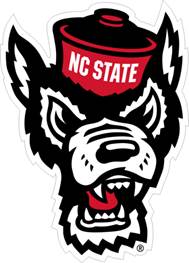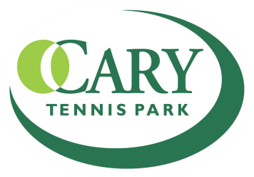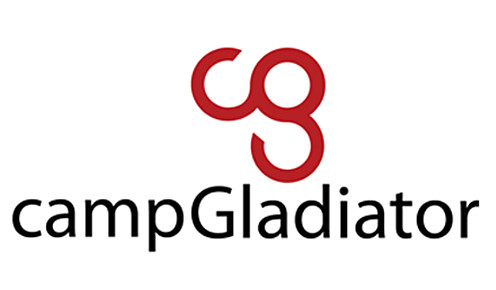Author: Will Parker, CSCS, USAW, FMS
Happy New Year! I hope you are starting off 2024 having a wonderful time with your friends and family! Going into the new year many people get extra motivation to achieve new goals and aspirations for themselves. Unfortunately, most start strong only to revert back into old habits and routines finding themselves more frustrated than before. In 2016 a study found that only 9% of people felt like they were successful in achieving and maintaining their New Year’s Resolution. If you are interested in setting a new challenge for yourself do not fret over the negative statistics and failures of others. There are several strategies we will be discussing in this post to help increase your likelihood of successfully conquering those short term and long-term goals!
To start things off for those trying to begin a new habit it is useful to understand the basics of neuropsychology because any new habit at its foundation is a new neural pathway in the brain. These new pathways are the beginning of your brain creating connections that were not previously present. Like building new roads in a city allows for easier more fluid transportation, a person is producing a new neural map for themselves. The name for this is Neural Plasticity, which basically states that your brain has the ability to adapt and change to the situation applied to it. This is the process of your motor and sensory neurons firing for the first time as a result of new stimuli. Your brain then interprets this information creating either a positive or negative association. Any new pathway however takes time and repetition to become easy, second nature or muscle memory through mastery of that task. I like to think of this like hiking through the woods. It is relatively easy for most to find a trail and simply go for a walk because many others have already done the difficult work to blaze that new trail by cutting down trees, removing bushes and clearing debris from the path. Conversely beginning a new habit is like getting out a chain saw, loppers, clippers, shovel, rake, wheel barrow, bags, a truck and trailer then hauling it all out to the woods and doing all that initial hard labor just mentioned through a dense thicket of woods.
Creating a new habit also parallels the process of developing a new skill like improving sprint form, hitting a baseball, shooting a free throw, playing a guitar or even singing a song. At some point, even Usain Bolt did not know how to run but if you know who he is then you are fully aware of the true greatness and mastery he accomplished through years of dedicated focus, repetition and hard work. While some are genetically gifted with certain specific talents the truly great nurture that talent by cultivating the corresponding skills that amplify their respect natural gifts, like Usain Bolt, Lebron James, Lionel Messi, Novak Djokovic, Tiger Woods, Wayne Gretzky, etc. Everyone who gets to the point of mastering a skill goes through all 4 steps of the Skill Development Continuum listed below. We are all somewhere within these four steps and depending on how much focus, time and effort we apply to the respective skill will determine how far along the path of development we find ourselves.
Skill Development Continuum
- Unaware + Unskilled – people do not possess the skill in question but more than that they do not even know that skill exists. They are totally unaware while also being unskilled.
- Aware + Unskilled – they now have learned about the existence of the skill but have not begun practicing yet so their skill level is zero.
- Aware + Skilled – awareness of the skill is present and now the individual has some level of mastery of the related skill like Novice, Advanced Beginner, Competent, Proficient or Expert (Expert status achieved in step 4 below).
- Unaware (unconscious) + Skilled – This final step is when one gains an elite level expert mastery of a task or knowledge base. They are so skilled they do not require any conscious thought to accomplish job. An example, for most 😉, is walking. As an infant or toddler, we all struggled mightily with this action while hopefully avoiding injury along the way. As we grew and walked daily this no longer demanded our concentration.
Now that we have laid a solid foundation of conceptual background for context let’s talk about some practical steps you can take to help move forward with your personal goals. The first step is the hardest for most people and that is to just get up and get started. Sir Isaac Newton, one of human history’s most influential thinkers developed several scientific laws the first of which being the Law of Inertia stating that “an object at rest stays at rest and an object in motion stays in motion.” It can be difficult to get going with something new due to energy demand, discomfort or even an overwhelming amount of options we have here in modern America. The key is to gain positive momentum by just getting started. You want to get that proverbial ball rolling as long as it is going in a positive general direction. It does not need to be difficult, uncomfortable or anywhere near the perfect plan but merely doing something.
The second practical point to address is the one I find most people neglect or skip over entirely and that is to start with 1 or at most 2 EASY goals. This ties back to the first key mentioned of maintaining positive momentum. You want to avoid selecting a goal that could easily frustrate or derail the effort you have already invested in your development. Additionally, you want to limit yourself to only 1 or 2 new goals because focusing on multiple new habits at once is much less sustainable and is a strong corollary to relapse. Furthermore, focusing on one habit allows you to enhance the quality and efficacy preventing a “jack of all trades master of none” effect. Lastly this helps with maintaining the new habit for a lasting period of time setting the neural pathway through muscle memory thus moving you from novice along the path towards expert. As you go through this process a sense of self belief and accomplishment begin to manifest which then further solidifies the new skill while adding value to the process of skill development.
The third step is to make the process as fun as possible by being intentional and creative. Many people find enjoyment and more success by getting a friend to participate with them. This provides a social dynamic and creates accountability with one another. Just remember to start with a mutually agreed to easy goal so you both get off on the right foot. However, if you are more on the introverted side of the spectrum then look for different activities that you have enjoyed in the past or are excited to try. Lastly you can also come up with different games to go along with your goals. An example of this for a fitness goal is getting a deck of cards to give some randomness to your workout routine. Pick four exercises like plank, push-ups, glute bridges and air squats then assign each exercise to a particular suit (spades, clubs, diamonds and hearts). When you draw a card, the suit determines the exercise and the number determines the quantity or reps/time. Then shuffle the deck, set a 10 min timer and try to accomplish as much as possible.
The fourth and final practical point is learning how to effectively set goals. A great commonly used tool is the SMART Goal setting acronym.
SMART Goal Setting
- Specific – By creating a goal that is without ambiguity one produces a clear expectation and thus accountability for themselves. Additionally, a goal that is vague in nature is inherently much more difficult to plan for which then breeds frustration and negative momentum, the opposite of what we are working towards. Imagine you were driving to another state to visit friends but did not know the street they lived on or even the city they lived in. It would be next to impossible to hit your target of meeting at your friend’s house.
- Measurable – Being able to set quantitative goals allows one to be able to tangibly track progress, seeing the positive results of their effort.
- Attainable – This is a big key and relates back to the previous practical point of setting only 1 or 2 easy goals to start. Being intentional about maintaining the positive momentum you achieve is represented here in making sure your goals provide an easy challenge, at least at first. If your goals are too big and audacious then burn out and frustration becomes more likely especially early on in your journey establishing a new habit.
- Relevant – When setting a short-term goal, you want to ultimately keep in mind the big picture long term goal you want to achieve. This way the short-term goals or small individual steps you are taking, have you on the path to accomplishing your big picture long term goal. A mentor of mine taught me to always “keep the end in mind” so your small daily decisions lead to big long-term results.
- Timely – Timely goals are critical whether they are short term like hourly, daily or weekly as well as long term goals like 6 weeks, 6 months or even a year. By setting a specific time in which a goal is to begin and end allows for a straightforward structured framework and clarity of expectations. Conversely if one were to start a goal with no definitive end the monotonous never-ending feel can easily become overwhelming and lead to giving up.
If you have read this far, congratulations! You are on the right track to positive lasting changes. You have already started yourself along a path of positive momentum. Keep it up! What is 1 easy goal you can set for yourself to accomplish today? Going for a walk around your neighborhood? Taking a bike ride? Cutting out all drinks other than water for a day? During TV commercials doing some push-ups, wall sit, air squats or single leg balance? Whatever you choose remember to 1) just get started, 2) select only 1 or 2 easy goals for yourself (at least initially) 3) have fun and 4) try using the SMART goal setting strategy to assist you. If you are interested in looking for more detailed guidance along your health and fitness journey I would be happy to talk with you about the options we can provide in serving you. You can email me at wparker@raleighortho.com or follow us on Instagram at APCRaleigh. If you have any feedback regarding this blog post I would love to hear from you.
I wish you well in 2024. Have fun and good luck!
About the Author: Will Parker CSCS, USAW, FMS
Will graduated from East Carolina University in 2006 with a Bachelor of Science degree in Exercise & Sports Science. He became a Certified Strength & Conditioning Specialist (CSCS) through the National Strength & Conditioning Association (NSCA) in 2007. From 2006-2008, Will was an Assistant Strength & Conditioning Coach at NC State University working with Football, Basketball, Baseball, Soccer, Track & Field along with several other teams. In 2012, he earned a United States of America Weightlifting (USAW) Level 1 certification.
Will has worked as a Performance Specialist for Raleigh Orthopaedic since 2006. He has worked with athletes from the NFL, NBA, MLB, NHL, and MLS along with many from Division 1, 2 & 3 Universities in addition to helping various soldiers pass their Special Operations selection course. Will specializes in performance evaluation, speed training (acceleration, absolute speed, lateral movement, multi-directional & deceleration), functional strength training (foundation, endurance, hypertrophy, max strength, power, and body composition), injury risk assessment, soft tissue treatment, increasing soft tissue elasticity, basic nutritional guidance and goal management.
Will enjoys interacting with his clients, helping them achieve their speed, strength and/or weight loss goals and subsequently set higher goals to work toward.









